Food for a year to feed a family of 4
We have worked for years to get to the point where we could grow enough food basics to cover us for a whole year. As always, there are some things we cannot produce for ourselves yet like baking ingredients. But we do make our own soap for washing cloths and our bodies which also helps reduce the monthly food expenses to about $150. We live on around $500 - $700 depending on the month. Phone bill is by far our biggest yearly expense, but we keep it so that we can continue to interact and share with fine people like yourself.
We eat a lot of potatoes and squash because that is what we can grow. These boxes are 16" cubed which is holding countless squash and about 500 - 600 lbs of potatoes.
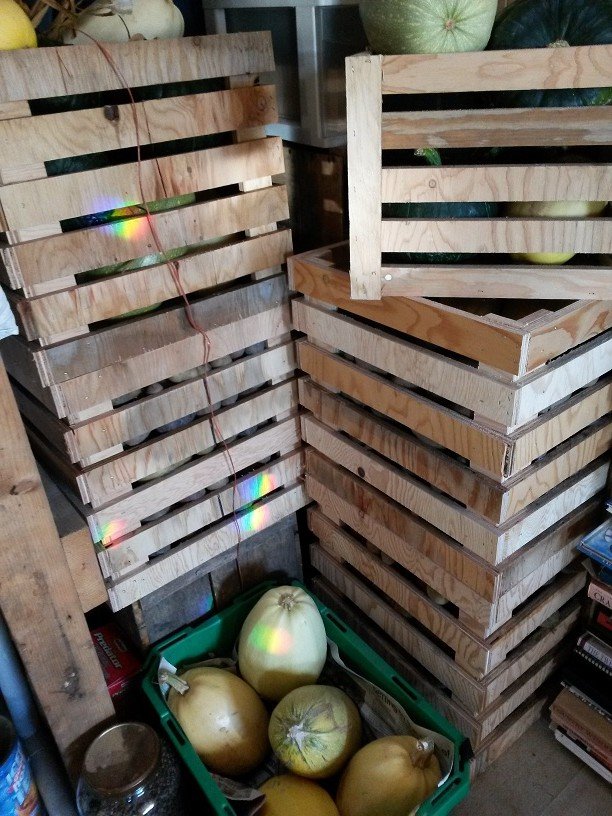
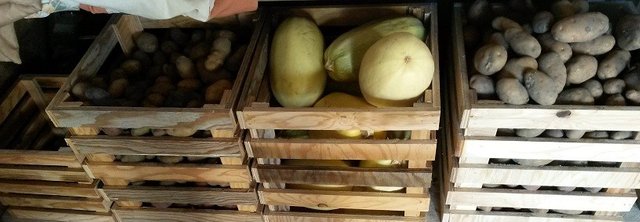
Our canning efforts are going very well this year. Best year we had. Managed to can apple juice, tomato juice, tomato sauce, salsa, spruce tip syrup, jams, apple butter, pickles, etc.
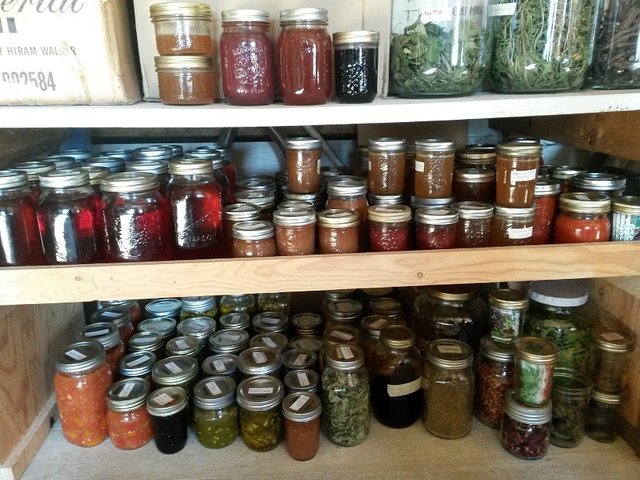
We don't grow our own wheat, but we do get heritage, organic seed which we can then mill into our own flower and sift if necessary. Our mill serves us VERY well. We run it easily on our solar system on a sunny day like today!
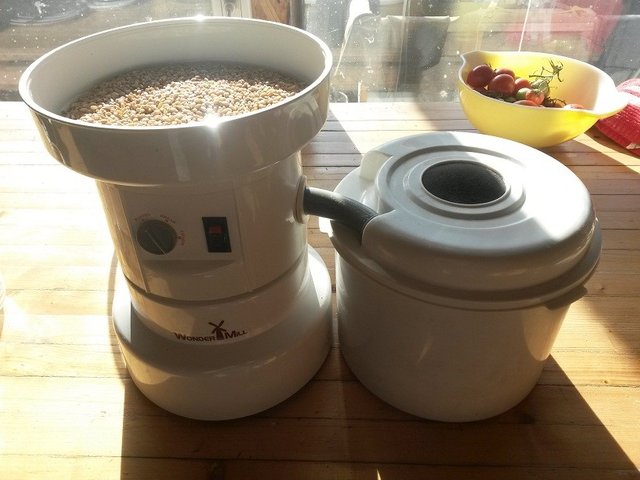
So all our dry goods are stored in another pantry and a bag of wheat can last us a couple years and stores very well, unlike already milled flower.
Our deep freeze has veggies from the garden & greenhouse, chicken, turkey and goat in it right now. Hopefully in a few months there will be another 25-30 birds joining them and some red meet if we can find a grass fed cow. Our deep freeze is about 12 cubic food and when full it will carry us for a year. We also have goats that can provide us with milk for most of the year and chickens provide fresh eggs as well. Live animals literally save our lives through a long cold winter!
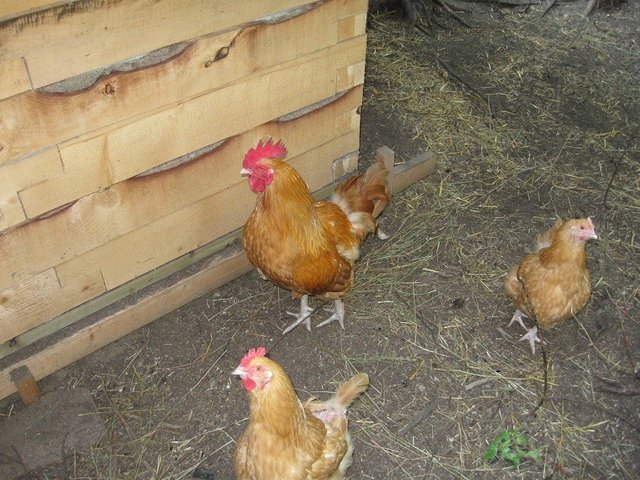
Despite all this work, I don't think we are 100% there yet. We are learning how to harvest wild food from the boreal forest, so that will help us tremendously to pick up the short falls in our diet.
We definitely are working to get to a similar place you guys are when it comes to food self sufficiency. Right now our food bill is huge.
We are also probably going to be growing a lot of squash and potatoes. The squash especially are so easy to store for long periods of time and with the many varieties it makes a lot of sense.
We found similar advantages with potatoes and squash. A huge focus for us as they are a staple in our diet. Bravo to you! Thank you for sharing!
Ya, we found the same solution. Potatoes and squash are easy to grow and produce a lot, especially around here.
We are heading in the same direction - but still a long way to go.
This year we achieved 'vegetable independence' for 5 months - with no need to buy anything from a store. Next year we want to add another couple of months to that.
Adding each successive month to that I suspect will get harder and harder. But with our polytunnel and greenhouses that we built this year I think it is feasible to aim for year round veg independence.
And our chickens do us proud - we haven't needed any shop bought eggs for over 4 years now.
Next year we want to increase our broiler chicken production to about 30 birds. Hopefully also all our new fruit trees will slowly start to come online.
My big goal is to produce more than we need. So far we are partially supporting two other families with our surplus eggs and veg. I am hoping to up that to 4 families on a more sustained basis.
That's the best I can do. I will have chipped away at the global industrial food system, and had one small victory in my little corner of Wales.
Sounds wonderful. We tried to raise 600 birds one time. That was way too much. So now we raise about 100-150 each year and keep about 50 for laying eggs. That seems to be the sweet spot for us. We have our chickens out in chicken tractors so that we get grass fed chicken. They taste wonderful.
Bravo for all your efforts. It is hard work eh! We increased our garden space to 8200 square feet but just cannot seem to get the whole thing into production. We will continue to work it out. Learning these skills that were so common years ago and nearly lost is a huge challenge. I'm glad others are exploring these same questions that we are.
I love your content. So inspiring. You are doing great!
Thank you! I'm glad you are enjoying it all!
When you start adding up all the food you eat throughout a year, you can really see how to cut back.
Obviously growing your own, canning and preserving, hunting or raising livestock for the freezer. It all adds up
Congratulations on being so proactive on your budget and food savings!
That is so cool.
You're definately well on your way!
Keep up your great works!
We live in the city but we still making those kinds of jars for the winter I will love to get to that level of self sustainability one day. Thank you for your wonderful article as always very inspirational and informative.
Looking good - do you grow sweet potatoes too? There are a number of different varieties and some are more nutritious than the regular white/Irish potato which are delicious but have less food value.
There is a lot of good wild food in the forests of Canada - wild leeks, blueberries, watercress, mushrooms like morels, walnuts, hazelnuts, fiddleheads, the list goes on.... here is a handy link that may interest you
http://www.outdoorcanada.ca/15-wild-plants-you-can-eat
We don't grow sweet potatoes ... yet. I would love to try them though. We have 5 verities of potatoes, my favorite being the purple potatoes from the mountains of Peru and a heritage verity that has been in Newfoundland for 250 years. They seem to do well here. I am aware of most of those wild foods as we have been in the bush now for many years learning about the wild foods and medicines. The book we use most is the 'Boreal Herbal, The: Wild Food and Medicine Plants of the North' by Beverly Gray. Fantastic resource and had hundreds of species in there to help with medicine and food! We have also learned a lot from the indigenous teachings as well.
I will check out that book thanks
We started implemented Chickens and some farming back in Texas to be more self sufficient, but the weather extremes and poor soil made it difficult in Texas. We are now starting over in Panama, at a higher elevation with volcanic soil, good rain, and spring temperatures year around, 60 - 80 degrees.
What kind of extremes were you dealing with in Texas? Just curious as we are able to make it work here north of the 54th parallel were temps range from -40C to +35C in the year.
Primarily the heat, often long stretches over 100F. We could have built shade structures but it didn't seem worth it.
Thermal mass structures may have helped to keep them cool during the hot summers. It is amazing what thermal mass can do in the extreme cold or hot. Thanks for sharing.
Congratulations @wwf! You have completed some achievement on Steemit and have been rewarded with new badge(s) :
Click on any badge to view your own Board of Honor on SteemitBoard.
For more information about SteemitBoard, click here
If you no longer want to receive notifications, reply to this comment with the word
STOP